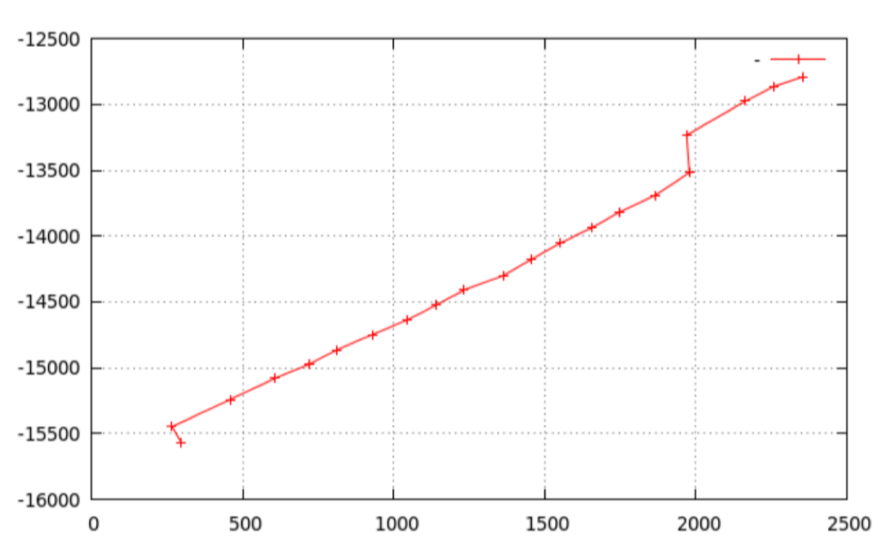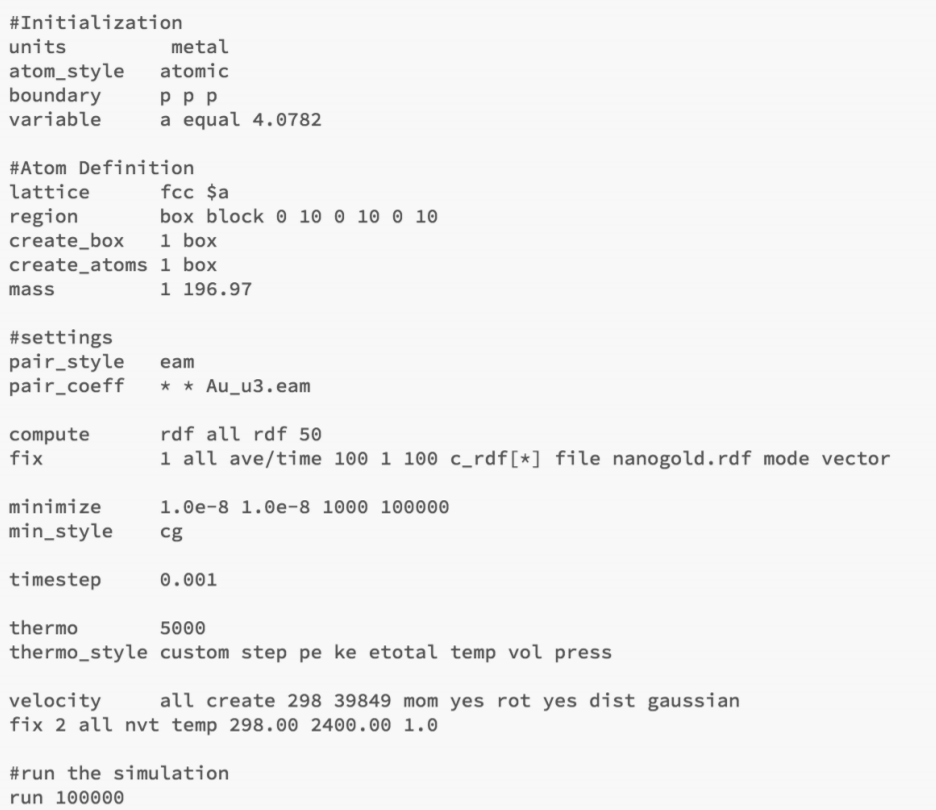I am trying to display the phase transition for gold using the following input script: (melt.in.png) but what I get is a much higher melting temperature around 2000 K than the actual one around 1300 k. This input script is taken from an example posted : http://www.u.arizona.edu/~stefanb/Files/HPCTutorials/MD-lammps-Final.pdf
I am not sure what mistake I am making, is it something in setting up the system??
the output plotted and attached : melt.out.png
Thank you
Regards,
Maryam


I am trying to display the phase transition for gold using the following
input script: (melt.in.png) but what I get is a much higher melting
temperature around 2000 K than the actual one around 1300 k. This input
script is taken from an example posted :
http://www.u.arizona.edu/~stefanb/Files/HPCTutorials/MD-lammps-Final.pdf
I am not sure what mistake I am making, is it something in setting up the
system??
the tutorial shows melting of a nano particle, not a bulk system. that
is a significant difference.
it has been discussed on this list a very many times, that a
"macroscopic procedure" to determine the melting point of a bulk
substance is not likely to produce reliable results when following a
"macroscopic" protocol, i.e. raising the temperature at a continuous
rate until the substance melts and then determine the melting point by
following some property of the system. first, your rate of raising the
temperature is extremely high (try to compute it) compared to
macroscopic experiments and you are discarding finite size effects and
the fact that melting is an activated process. for confirmation, just
do the process the other way around and see, if you can determine the
melting point from observing how a melt solidifies. you should get the
same result, right? well, do you? how would you explain that?
you will find discussions in the mailing list archives (and in the
relevant text book literature about statistical thermodynamics)
explaining, that the best way to determine the melting point of a
nanoscale bulk sample is to set up a coexistence simulation and
determine the temperature, where the solid and liquid part of the
system maintain their size.
axel.

